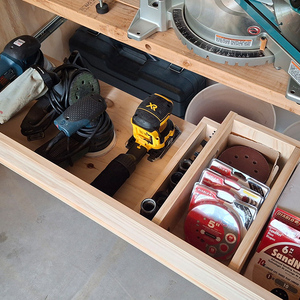I replaced a 3-way switch and discovered something interesting when I was done. I checked the voltage on the three terminals: The com (connected to the feed) was of course at 120v. One traveler terminal was at 120v, the other was at 0. When the switch is closed and the light is on, there’s still 120v at the com, and the terminal that was at 0v reads as 120v. What baffles me is that the terminal that was at 120v is reading 40v. Is this normal, or is one of the switches bad?
Discussion Forum
Discussion Forum
Up Next
Video Shorts
Featured Story

From building boxes and fitting face frames to installing doors and drawers, these techniques could be used for lots of cabinet projects.
Featured Video
How to Install Exterior Window TrimHighlights
Fine Homebuilding Magazine
- Home Group
- Antique Trader
- Arts & Crafts Homes
- Bank Note Reporter
- Cabin Life
- Cuisine at Home
- Fine Gardening
- Fine Woodworking
- Green Building Advisor
- Garden Gate
- Horticulture
- Keep Craft Alive
- Log Home Living
- Military Trader/Vehicles
- Numismatic News
- Numismaster
- Old Cars Weekly
- Old House Journal
- Period Homes
- Popular Woodworking
- Script
- ShopNotes
- Sports Collectors Digest
- Threads
- Timber Home Living
- Traditional Building
- Woodsmith
- World Coin News
- Writer's Digest


















Replies
Where you using a high impedence meter, such as a digital one?
If so way you where measuring was "stray votlage" formed by the capactive couple between the inactive traveler wire and the active one.
Connect the smallest load that you can find, such as a 5 watt nightlight bulb across it and measure it and you will find that it is zero.
Yes, I was using a dmm. It seemed logical that one traveler should be at 120v, the other at 0v. It makes sense there would be some stray voltage in there. Thanks for the explaination, Bill.
I think Bill hartmann has it pegged.
As an aside next time your in any of the big box hardwares look around for an solenoid voltage detectors. The Square D 'Wiggy' being, IMHO, the best. This type of meter is the best test instrument for general and HO use. Simple, effective, rugged, cheap at $18 - 22 and not fooled by induced voltages they have been an industry mainstay for something like 70 years.